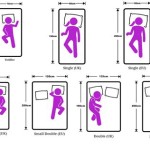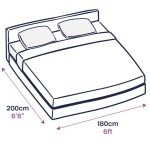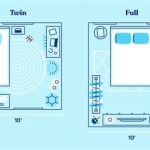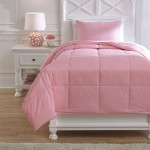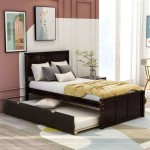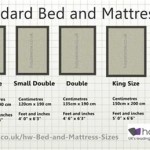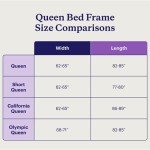Sheet Size Considerations for Hospital Beds
The selection of appropriate sheet sizes for hospital beds is a critical aspect of patient care, contributing significantly to comfort, hygiene, and operational efficiency within healthcare facilities. Correctly sized sheets ensure a snug, secure fit, minimizing the risk of slippage and bunching, which can lead to skin irritation, pressure sores, and disrupted sleep for patients. Moreover, standardized sizing simplifies inventory management, laundry processes, and staff training, optimizing resource allocation and reducing the potential for errors.
Hospital beds, which differ significantly in size and configuration from standard residential beds, require specialized linens to accommodate their unique dimensions and functionality. Understanding the specific sheet size requirements for various types of hospital beds is therefore essential for healthcare providers seeking to maintain a high standard of patient comfort and care.
Standard Hospital Bed Sheet Sizes
Standard hospital beds typically measure approximately 36 inches wide and 80 inches long. To adequately cover these beds and allow for tucking, fitted sheets generally measure around 36 inches by 80 inches by 9 inches (depth). Flat sheets, used as top sheets, often measure approximately 66 inches by 104 inches. These dimensions provide adequate coverage and allow for proper tucking to secure the sheet and prevent it from becoming dislodged during patient movement.
The depth measurement of the fitted sheet is crucial. A fitted sheet with insufficient depth will constantly slip off the mattress, creating discomfort for the patient and requiring frequent adjustments from nursing staff. Conversely, excessive depth can result in bunching and wrinkles, which can also be uncomfortable and potentially contribute to skin breakdown. Therefore, selecting a fitted sheet with the appropriate depth is paramount. It is recommended to measure the mattress depth, including any overlays or padding, to ensure accurate fitting.
Flat sheets should be large enough to provide adequate coverage, allowing for tucking at the foot of the bed and leaving sufficient overhang on the sides. This overhang not only enhances the aesthetic appeal of the bed but also provides a secure barrier and helps to keep the patient warm and comfortable. The size of the flat sheet also accommodates various patient heights and movement patterns.
Specialty Hospital Bed Sheet Sizes
Beyond standard hospital beds, specialized beds designed to address specific patient needs necessitate different sheet sizes. Bariatric beds, designed for larger patients, typically require wider and longer sheets than standard beds. Similarly, beds with adjustable features, such as those used in intensive care units, may require sheets that accommodate the bed's articulation and prevent strain on the fabric. Failure to use appropriately sized sheets on specialty beds can compromise patient safety and comfort, and potentially damage the bed's mechanisms.
Bariatric Beds: Bariatric beds are wider and often longer than standard hospital beds to accommodate larger patients. Common sizes for bariatric beds range from 42 inches to 54 inches in width and 80 inches to 88 inches in length. Correspondingly, bariatric fitted sheets should measure approximately 42-54 inches by 80-88 inches with an appropriate depth to accommodate thicker mattresses. Bariatric flat sheets often measure 80 inches by 104 inches or larger, providing ample coverage and minimizing the risk of the sheet becoming dislodged. Using standard-sized sheets on a bariatric bed is not only unsafe but also impractical, as they will not adequately cover the mattress and will likely tear or stretch excessively.
Low Beds: Low beds, designed to minimize the risk of falls, are often shorter than standard hospital beds. While the width may remain the same, the length can be reduced to 76 inches or even less. In these cases, shorter fitted and flat sheets are required to ensure a proper fit and prevent excess material from dragging on the floor, which could create a tripping hazard. Selecting the correct sheet size for low beds is crucial for maintaining patient safety and preventing accidents.
Adjustable Beds: Hospital beds with adjustable features, such as head and foot elevation, require sheets that can withstand the changes in bed configuration without tearing or becoming dislodged. While the overall dimensions may be similar to standard beds, the fabric and construction of the sheets should be durable and flexible. Reinforced corners and elasticized edges on fitted sheets are particularly important for adjustable beds. Using standard sheets on adjustable beds may result in premature wear and tear, requiring more frequent replacements.
Material Considerations for Hospital Bed Sheets
The material composition of hospital bed sheets is as important as the size. Factors such as durability, breathability, moisture-wicking properties, and ease of laundering should be carefully considered when selecting bed linens for healthcare settings. Common materials include cotton, polyester, and blends of the two. Each material offers distinct advantages and disadvantages in terms of comfort, maintenance, and cost-effectiveness.
Cotton: Cotton sheets are known for their softness, breathability, and absorbency. They are comfortable against the skin and help to regulate body temperature, reducing the risk of overheating. However, cotton sheets are prone to wrinkling and shrinking, and may require more frequent ironing. They can also be more expensive than other materials. In healthcare settings, cotton sheets are often preferred for their comfort and hypoallergenic properties, but their durability and maintenance requirements must also be considered.
Polyester: Polyester sheets are more durable, wrinkle-resistant, and less prone to shrinking than cotton sheets. They are also generally less expensive. However, polyester sheets are less breathable and absorbent than cotton, which can lead to discomfort for some patients. They may also feel less soft against the skin. In healthcare settings, polyester sheets are often used for their durability and ease of maintenance, but their comfort level should be carefully evaluated, especially for patients with sensitive skin.
Cotton-Polyester Blends: Blended sheets combine the advantages of both cotton and polyester. They are more durable and wrinkle-resistant than pure cotton sheets, while still retaining some of the softness and breathability of cotton. Blended sheets are a popular choice for healthcare settings, as they offer a good balance of comfort, durability, and cost-effectiveness. The specific ratio of cotton to polyester can vary, with higher cotton content generally resulting in a softer and more breathable sheet, while higher polyester content provides greater durability and wrinkle resistance.
In addition to the basic material composition, other factors to consider include the thread count and weave. Higher thread counts generally indicate a softer and more durable sheet, while different weaves (e.g., percale, sateen) can affect the sheet's texture and feel. Selecting the appropriate thread count and weave can significantly impact patient comfort and satisfaction.
The color of hospital bed sheets is also often standardized within healthcare facilities. White is a common choice due to its perceived cleanliness and ability to withstand frequent bleaching. However, some facilities may opt for light-colored sheets to make stains more visible and ensure proper cleaning. The choice of color should be based on considerations of hygiene, aesthetics, and the facility's overall branding.
Ultimately, selecting the correct sheet size and material for hospital beds is a multifaceted process that requires careful consideration of patient needs, bed specifications, budget constraints, and operational requirements. By understanding the different factors involved and making informed decisions, healthcare providers can ensure optimal patient comfort, hygiene, and safety.

Hospital Bed Sheet Sizes A Comprehensive Guide

What Size Sheets For Hospital Bed And How To Choose

What Size Sheets For Hospital Bed And How To Choose
How To Choose Hospital Bed Sheets And Bedding

What Size Sheets For Hospital Bed A Complete Guide 2024

Essential Guide To Hospital Bed Sheets Comfort Hygiene

Hospital Bed Sheets Fitted For Single Sheet Sets Use Hotel Or Hospita Whole Bedsheet And King Size

Whole Disposable Hospital Bed Sheets One Time Non Woven Examination Medical In Rolls Paper Sheet Made China Com

Hospital Bed Sheet Size Chart

Perfect Factory Customized Waterproof And Breathable Environmental Protection Disposable Hospital Bed Sheets Single Use Sheet Whole Made In China Com

